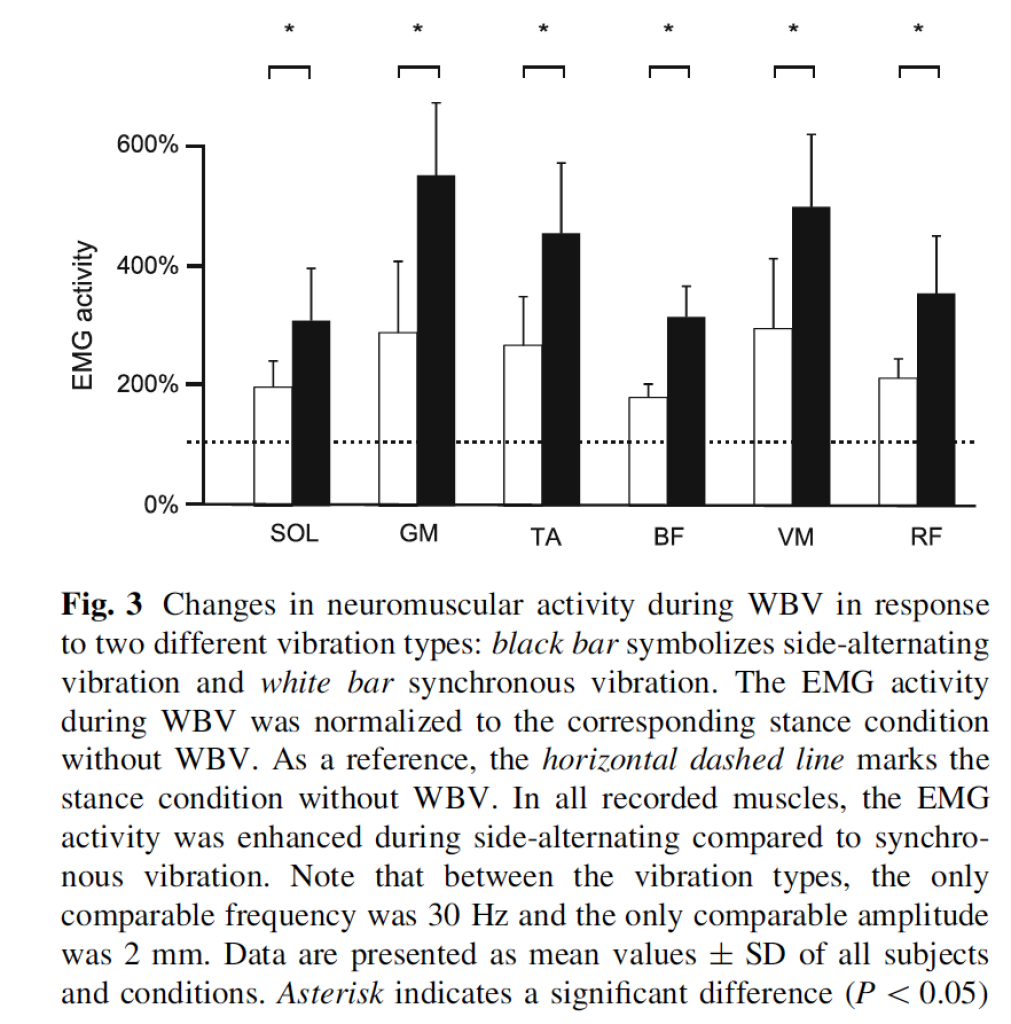The influence of vibration type, frequency, body position and additional load on the neuromuscular activity during whole body vibration
Source
Institute of Sport and Sport Science, University of Freiburg, Schwarzwaldstraße 175, 79117 Freiburg, Germany. ramona.ritzmann@sport.uni-freiburg.de
Abstract
This study aimed to assess the influence of different whole body vibration (WBV) determinants on the electromyographic (EMG) activity during WBV in order to identify those training conditions that cause highest neuromuscular responses and therefore provide optimal training conditions. In a randomized cross-over study, the EMG activity of six leg muscles was analyzed in 18 subjects with respect to the following determinants:
- Vibration type: side-alternating vibration (SV) Galileo vs. synchronous vibration (SyV) Power Plate
- Frequencies (5-10, 15-20, 25-30 Hz)
- Knee flexion angle (10°, 30°, 60°)
- Stance condition (forefoot vs. normal stance)
- Load variation (no extra load vs. additional load equal to one-third of the body weight)
The results are:
- Neuromuscular activity during SV (Galileo) was enhanced compared to SyV (Power Plate) (P < 0.05)
- A progressive increase in frequency caused a progressive increase in EMG activity (P < 0.05)
- The EMG activity was highest for the knee extensors when the knee joint was 60° flexed (P < 0.05)
- The plantar flexors in the forefoot stance condition was best (P < 0.05)
- Additional load caused an increase in neuromuscular activation (P < 0.05)
In conclusion, large variations of the EMG activation could be observed across conditions. However, with an appropriate adjustment of specific WBV determinants, high EMG activations and therefore high activation intensities could be achieved in the selected muscles.
The combination of high vibration frequencies with additional load on the SV platform (Galileo) led to highest EMG activities. Regarding the body position, a knee flexion of 60° and forefoot stance appear to be beneficial for the knee extensors and the plantar flexors, respectively.
EMG Activity Galileo (black) vs Power Plate (white)

EMG Activity Galileo (black) vs Power Plate(white)
